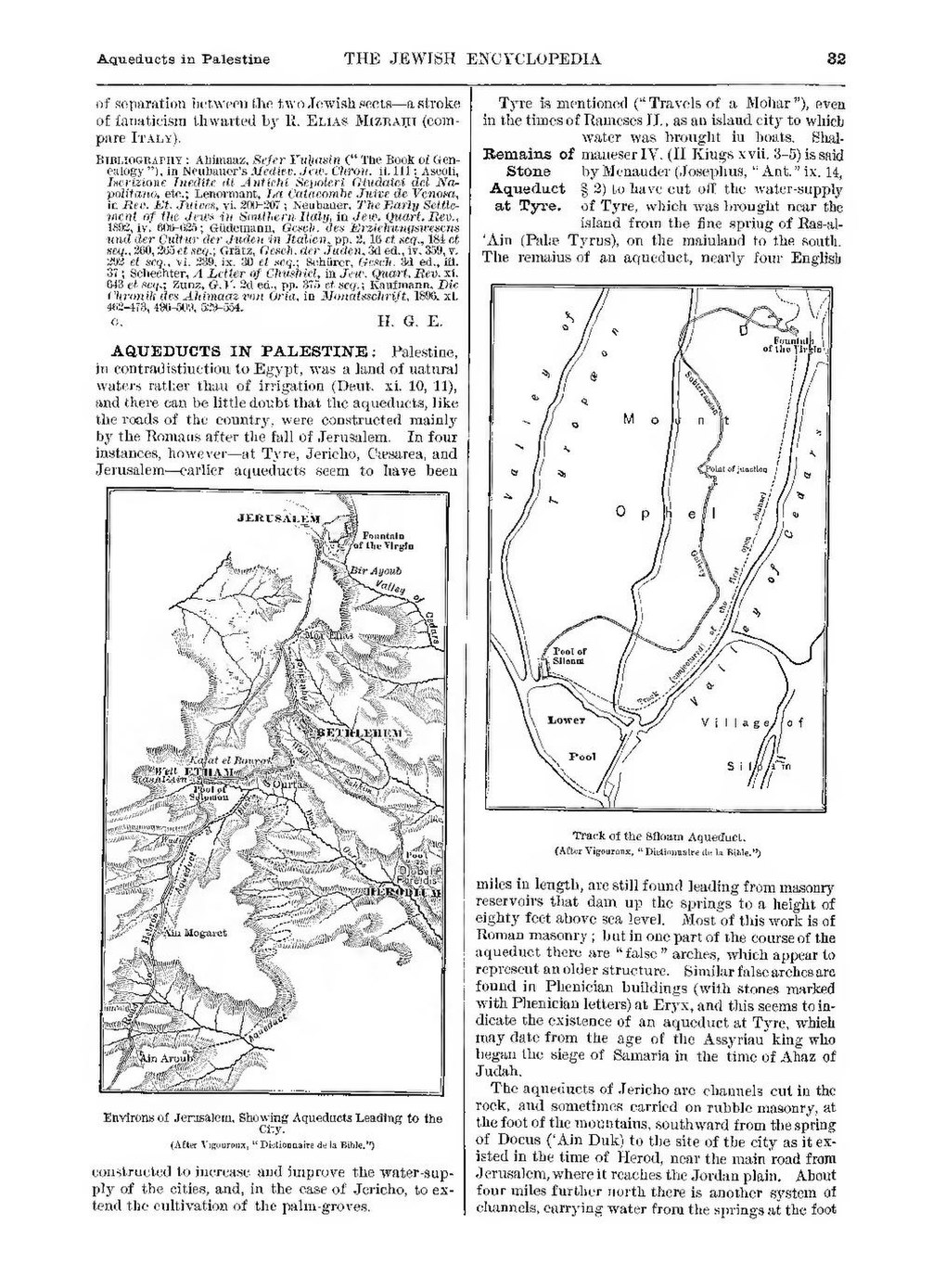THE JEWISH ENCYCLOPEDIA
Aqueducts in Palestine
—
of separation between the two Jewish sects a stroke of fanaticism thwarted by H. Elias Mizrahi (compare Italy).
Bibliography
Ahimaaz, Sefer Yuljasin C" The Book of Genealogy "), in Neubauer's Mediev. Jew. Chron. ii. Ill Asooli, Iscrizione Inedite di Antiehi Sepolcri Giudaici del Napolitano, etc.; Lenormant, La Catacomhe Juive de Venosa, in Rev. Et. Jitives, vi. 200-207 Neubauer, The Early Settlement of the Jews in Southern Italy, in Jew. Quart. Rev., 1892, iv. 606-625; Giidemann, Geseh. des Erziehungswesem und der Cultur der Juden in Italien, pp. 2, 16 et seq., 184 et sea., 260, 2Hoetseq.; Gratz, Geseh. der Juden, 3d ed., iv. 359, v. 292 et seq., vi. 239, ix. 30 et seq.; Schiirer, Geseh. 3d ed., Hi. 37 Schechter, Letter of Chmhiel, in Jew. Quart. Rev. xi.
32
(" Travels of a Mohar "), even Rameses II. as an island city to which water was brought in boats. ShalRemains of maneser IV. (II Kings xvii. 3-5) is said Stone by Menander (Josephus, " Ant. " ix. 14, Aqueduct § 2) to have cut off the water-supply at Tyre, of Tyre, which was brought near the island from the fine spring of Ras-al-
Tyre
is
mentioned
in the times of
,
'Ain (Palse Tyrus), on the mainland to the south. of an aqueduct, nearly four English
The remains
A
643 et seq.; Zunz,
tlironih des
G.V. 2d
ed., pp. 375 et seq.;
Ahimaaz von
Kaulmann, Die
Oria, in Monatssclirift, 1896,
xl.
462-173, 496-509, 529-554.
H. G. E.
g.
AOUEDTJCTS IN PALESTINE: in contradistinction to
Palestine,
Egypt, was a land of natural
waters rather than of irrigation (Deut. xi. 10, 11), and there can be little doubt that the aqueducts, like the roads of the country, were constructed mainly by the Romans after the fall of Jerusalem. In four instances, however at Tyre, Jericho, Coesarea, and Jerusalem earlier aqueducts seem to have been
—
—
Track of the Siloam Aqueduct. (After Vigouroux, " Dietionnaire de la Bible.")
miles in length, are still found leading from masonry reservoirs that dam up the springs to a height of
eighty feet above sea level.
Most
Roman masonry but in one part of
of this
work
is
of
the course of the
aqueduct there are arches, which appear to represent an older structure. Similar false arches are found in Phenician buildings (with stones marked with Phenician letters) at Eryx, and this seems to indicate the existence of an aqueduct at Tyre, which may date from the age of the Assyrian king who began the siege of Samaria in the time of Ahaz of " false "
Judah.
The aqueducts
of Jericho are channels cut in the
and sometimes carried on rubble masonry, at the foot of the mountains, southward from the spring of Docus ('Ain Duk) to the site of the city as it existed in the time of Herod, near the main road from Jerusalem, where it reaches the Jordan plain. About rock,
Environs of Jerusalem, Showing Aqueducts Leading to the City. (AEter Vigouroux, " Dietionnaire de la Bible.")
constructed to increase and improve the water-supply of the cities, and, in the case of Jericho, to extend the cultivation of the palm-groves.
four miles further north there is another system of channels, carrying water from the springs at the foot
